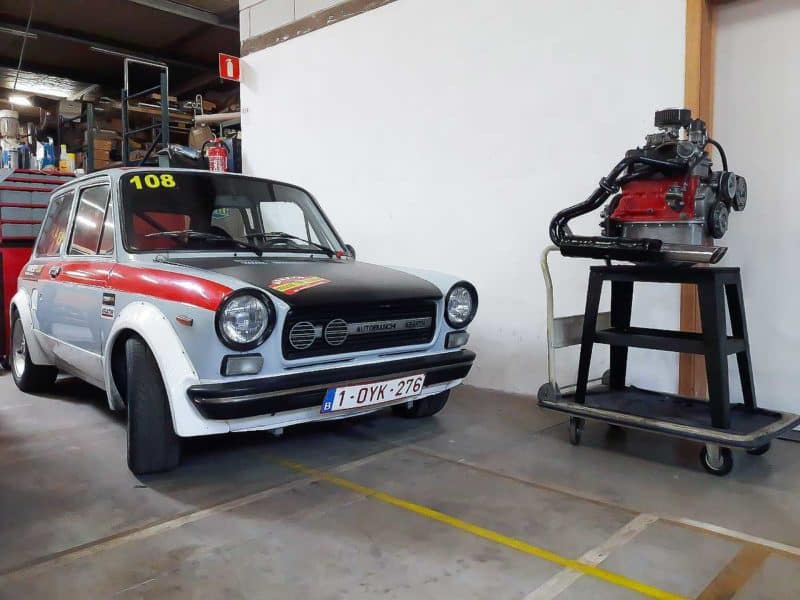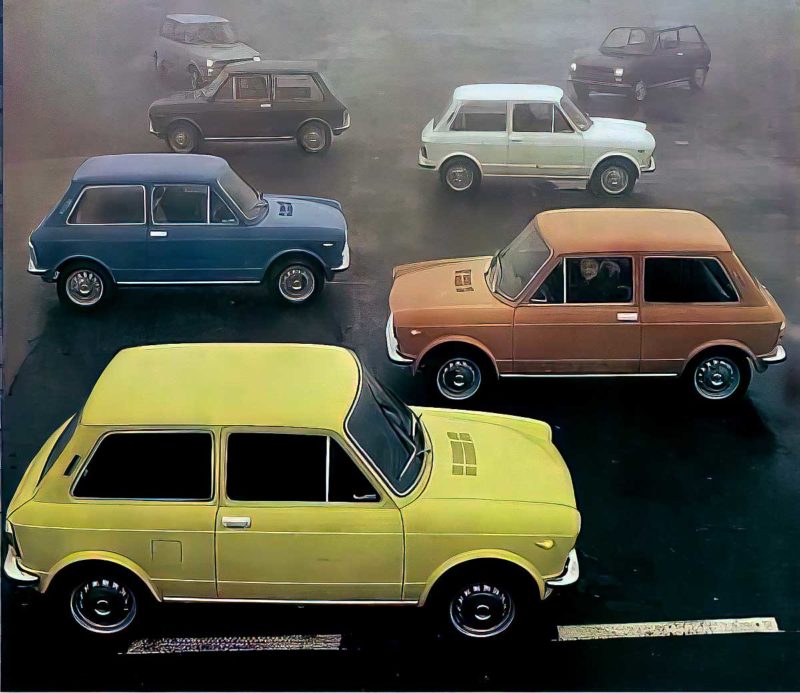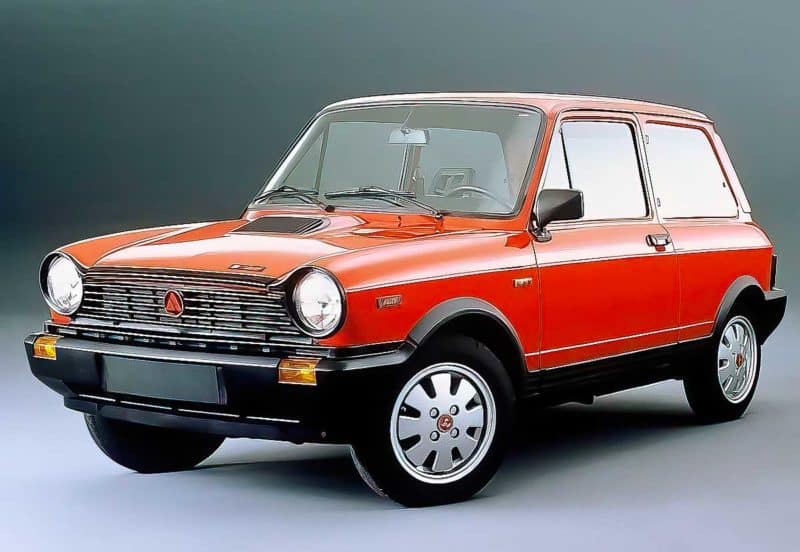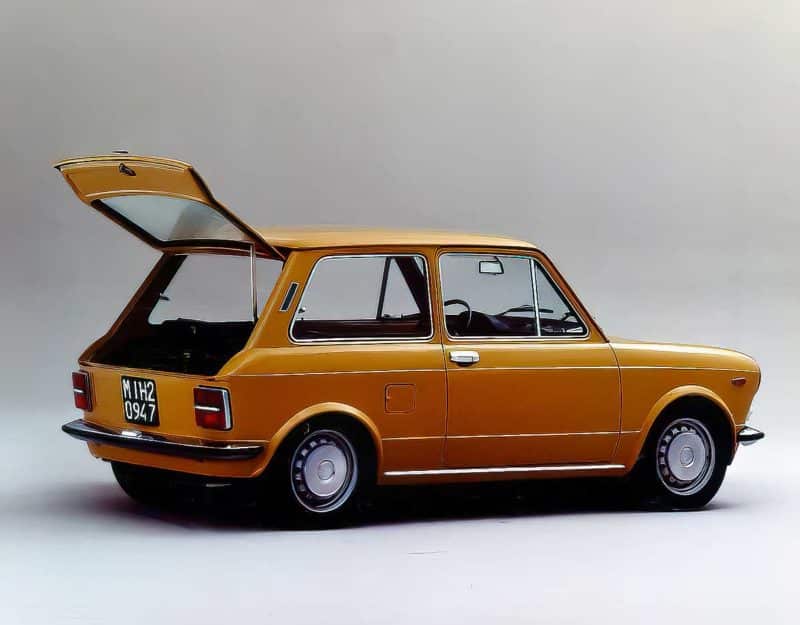On October 2, 1969, the Autobianchi A112 was presented. It symbolizes an era in which front-wheel drive and the optimal use of space became increasingly important for car manufacturers. The Autobianchi A112, which emerged from Giacosa's project X1/2, is a great success. The Italian Supermini, whose design also bears Gandini's signature, will be built in eight different generations over seventeen years.
In the sixties, Fiat – the owner of Autobianchi – had a lot to fear from the revolutionary Mini, which was built in Italy by Innocenti. Autobianchi has a competitive advantage due to the experience the company has gained with front-wheel drive (Primula). It devises - with mother Fiat as supervisor - a concept that is better than that of Mini. On a technical, practical and optical level. The development of the Autobianchi A112 paralleled that of the Fiat 128, both of which were shown to the public in 1969.
903 cc engine, old acquaintance
The Autobianchi A112 is powered by the 903 cc engine, which actually descends from the 603 cc Tipo 100 power unit from 1955 (the first Fiat 600 to be fitted with it). The 903 cc engine can also be found in the Fiat 850 Sport Coupé and the later Fiat 127, for example. The power source is in the A112 across the front, with the gearbox next to it (and not below it, as in the Mini). The engine in the A112 initially delivers 44 HP, and from 1971 this will increase to 47 HP. Thanks to the installation of an extra door, the luggage compartment is easier to reach, but the car remains compact on the outside. Inside there is a lot of space. The chassis includes McPherson springs at the front and a leaf spring at the rear. The wheels are suspended independently. Disc brakes are placed on the front of the car. The entire concept is completed with a graceful bodywork, which receives praise from both the outside and the inside for its excellent finish.
Basis for long-term production
The Autobianchi A112 is actually seen as a trailblazer for the Fiat 127 that is under development. Both Fiat's testing ground Autobianchi and Fiat itself are surprised by the success of the A112. The sales figures of the luxury little one have been good right from the start, and the reviews from the press and users (certainly the handling is praised) are full of praise. Not only does the Autobianchi A112 lay out the red carpet for the upcoming 127, its initial success is also the basis for a long production run.
Brief expansion
Autobianchi has slightly expanded the number of A112 models and also varies in the displacement of the engines. In 1971 the Autobianchi A112 Abarth is introduced. The top version gets an engine enlarged to 983 cc that delivers 58 HP to the reinforced crankshaft, among other things through the use of a two-stage carburetor. In addition, the Autobianchi A112 Abarth gets a sporty interior and an improved braking system. Despite the hefty pricing, the A112 concept in combination with the sporty (masterful) Abarth specifications proves to be a success. Over the years, the Abarth evolves along with the regular A112, which is also soon available as a more luxurious Elegant version.
Always adjusted in series
Over time, bodywork and engine improvements take place. From the third series (1975), five people can sit in the Autobianchi A112, and the appearance of the small car continues to improve. In 1977 the company introduced a 965 cc engine in response to demand for more power and environmental improvements. This engine had only one horsepower more than the 903 cc engine from previous models: 48 hp. The basic engine is modified and drops in power to 42 HP from 1975. The Abarth is now also available with a 70 HP 1050 cc engine, while the top model with a 983 cc engine goes out of production.
Sold as Lancia and the arrival of the Nuova A112
From 1977 it is sold as Lancia in various countries. This is the result of parent company Fiat's choice to place Autobianchi under Lancia. The Nuova A1977 (series 112) was also released in 4, with the higher roof. However, the A112 still has a long future ahead of it at that time, it will remain in production for a long time. In 1979 the appearance of the vehicle is changed by the use of plastic elements. In addition, the A112 Abarth gets a new five-speed gearbox. In addition, we can welcome the A112 in the new Elite trim level (with a 965 cc engine), while the Junior will be the basic version from that year.
Eighties
The A112 traditionally retains the trim levels for a long time, although the Elegant is replaced by the LX in 1982 (we are already at the sixth series). In 1985, after seven generations, most versions of the A112 will disappear from the scene. Lancia's latest model, the Ypsilon, is ready for production. The A112 will still receive one last tribute. Until 1979, the Junior (the name for the base model from 1986) still represents the eighth generation solo, as a discontinued model. The counter eventually stops at the number of more than 1,2 million copies produced. And that number has not been reached for nothing. The little A112 has an unparalleled appeal that continues to this day.
Subscribe now and get every month Auto Motor Klassiek in the bus.













You're right. This is due to the excessive (lease) use and fuel card. For every meter that car is used by the outdated system of civil servants; with addition, and fuel card you can drive as much as you want!
And our environment?!
See what a glass surface the car has (see and be seen). As a road user you can communicate with the driver and with the passengers. I have always experienced this as a pleasant feature of driving in Southern Europe. A wink and smile gives you priority.
Compare that to today's cars. Can't see who's in it, no contact with the driver, no contact with the outside world.
Clearly a 100x better driving, sitting, more reliable, etc. car than the mini!
The Ypsilon was also great, and is not inferior to an expensive mid-sized car!
I've owned and ridden several. One rustier than the other. Still fun cars and a clear upgrade from the Minis I drove before.